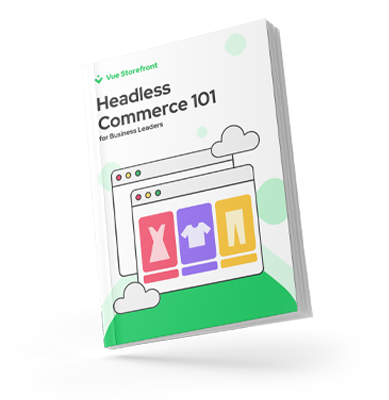5 min
July 24, 2023
Augmented reality and 3D models in Google search: a new opportunity for e-commerce?
The use of augmented reality and 3D models in Google search is a trend that can help increase engagement with potential customers and reduce returns. In addition, it can boost sales and improve the overall shopping experience, enabling users to make more informed decisions about online purchases.
Listen to the audio version of this article.
What it is.
AR (Augmented Reality) and VR (Virtual Reality) are two different technologies that offer different user experiences.
Augmented Reality (AR, augmented reality)
AR is a technology that combines virtual elements and the real world. Using devices such as smartphones, tablets or special glasses, users can view the real world with additional digital elements superimposed on it. For example, they can see projected images, information, animations or 3D models on the device's screen, which are integrated with the real environment and together create a whole new world. AR adds virtual elements to the real world, complementing it and expanding the user's visual experience.
Virtual Reality (VR, virtual reality)
VR is a technology that creates a completely virtual, simulated environment in which the user can be completely immersed using special VR goggles. VR goggles cover the user's field of vision, displaying images and video in a way that simulates being in an otherwise virtual environment. The user is isolated from the real world and can explore and interact with virtual objects and scenes. VR provides an immersive experience in which the user becomes part of the virtual world.
The difference between AR and VR
The difference between AR and VR is that AR combines virtual elements with the real environment, while VR creates a completely virtual environment separate from reality. AR extends and complements reality, while VR introduces the user to an entirely new virtual world.
A fitting room on your phone
The very idea of a virtual fitting room came as early as 2012. Japanese company Uniqlo started using fitting rooms that installed an augmented reality LCD screen instead of mirrors. There was no need to put on the clothes, just select them from the catalog to see your reflection in them. Everything became much simpler when phones began to be used instead of LCD screens. One of the first uses was for Converse sneakers. You point the phone at your foot, choose the shoe model you like and you're done. If the end result is satisfactory, you can make a purchase right away. This is even easier if you don't have to put the products on yourself. The platform with one of the largest AR catalogs now is IKEA. You go to the mobile app, select furniture and set it up in actual size in your apartment. You can see if a particular sofa fits in your living room and how well it looks with your wallpaper.
The virtual fitting room is no longer just an exclusive solution for a few brands. Today, many companies are taking advantage of this technology, allowing customers to visualize products in their environment via mobile devices or apps. Additionally, on social media, such as Facebook, marketing campaigns with AR effects allow users to try on products directly in their browser.
Virtual reality (VR) is also gaining popularity in e-commerce. Stores can create virtual showrooms where customers can move through a virtual environment and view products from different perspectives. This opens up new business and marketing opportunities for retailers, who can present their products in a more attractive and interactive way, even if they have limited retail space.
The number of brands experimenting with AR continues to grow. According to a recent Markets and Markets report, in 2018 AR in retail created a market worth more than $1 billion, and by 2023 the value will reach nearly $8 billion with an average annual growth rate of 47.1%.
For e-commerce
In addition to virtual fitting rooms and showrooms, augmented reality (AR) and virtual reality (VR) technologies are also opening up other opportunities for e-commerce.
Interactive instructions and guides
AR can be used to create interactive user manuals or product guides. Customers can see visual guidance on their device's screen to help them understand how to use the product or configure it correctly. This can enhance user experience and reduce the number of inquiries and returns related to product support.
Virtual product experience
For some products, such as sports equipment, electronics or home goods, VR can enable consumers to have a virtual experience of these products. For example, a customer can "move" to a virtual field and try out sports equipment, or "enter" a virtual home and see how a product fits into their interior. This gives them a better idea of the product and helps them make a more informed purchasing decision.
Virtual presentations and trade shows
For industries that frequently use presentations and trade shows, VR can provide an alternative form of product presentation. Companies can create virtual booths at trade shows that users can visit using VR goggles. This allows them to interact with products, receive information about them and network, even without physically attending the event.
Personalize the shopping experience
AR and VR can also be used to personalize the shopping experience. For example, an online store can customize the AR interface to take into account customer preferences and only show products that match their style, size or color. This can make it much easier for customers to find the perfect product and improve their shopping experience.
Summary
The use of augmented reality and 3D models in Google search can help increase engagement with potential customers and reduce the number of merchandise returns. In addition, it can boost sales and improve the overall shopping experience, allowing users to make more informed purchasing decisions.
AR and VR are growing as tools in e-commerce and have the potential to change the way we buy and interact with products online. A company that can leverage these technologies in innovative ways and deliver compelling and unique shopping experiences can gain a competitive advantage in the marketplace.







